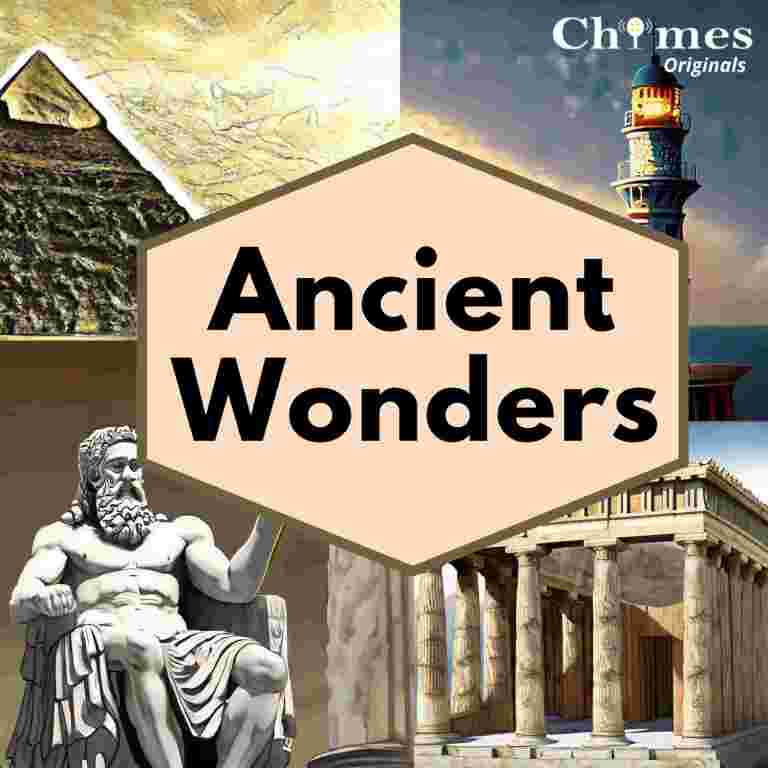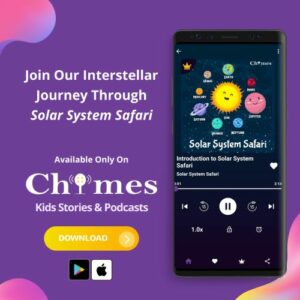Exploring Our Solar system
Welcome, young space enthusiasts, to a thrilling cosmic adventure! Have you ever wondered about the celestial wonders that reside in our very own solar system? Well, you’re in for a treat because we are about to embark on a Solar Safari, an exploration of the incredible planets that call our solar system home.
First things first, how many planets do you think are in our solar system? If you said eight, you’re absolutely correct! Congratulations on your celestial knowledge! Now, before we launch into our cosmic journey, let’s put your memory to the test. Pause for a moment and try to name all eight of them.
How did you do? If you didn’t get all eight, don’t fret; we’ve got you covered. The fantastic eight planets in our extraordinary solar system are Mercury, Venus, Earth, Mars, Jupiter, Saturn, Uranus, and Neptune. Got them all this time? Fantastic!
But hold on, there’s a cosmic twist to our tale. Not too long ago, there was a ninth member of our planetary family, a little world named Pluto. It had its time in the limelight as the ninth planet, but as our understanding of the universe expanded, scientists realized that Pluto was a bit different. While it orbits the Sun, it shares its cosmic neighborhood with other objects in the Kuiper Belt and couldn’t meet one of the key requirements to be called a planet – clearing its neighborhood of other objects. Consequently, in 2006, Pluto was reclassified as a “dwarf planet.”
So, today we proudly declare that we have eight planets in our solar system. It’s now time for us to blast off on our Solar Safari and delve into the mesmerizing world of these eight magnificent celestial bodies. Join us on this educational and exhilarating journey as we explore the planets that orbit our nearest star, the Sun, and discover the dynamic nature of scientific knowledge. Let’s venture forth and learn about the wonders of our solar system!
Mercury - The Sun’s closest neighbor
Our first stop is Mercury, the smallest and closest planet to the Sun.
Mercury is a speedy planet, orbiting the Sun in just 88 Earth days but taking 59 Earth days to rotate on its own axis. Its scorching daytime temperatures can melt metals, while its nights are icy cold due to the lack of an atmosphere to trap heat.
With a Moon-like surface, Mercury’s craters bear names like Beethoven and Shakespeare. Observing it from Earth is challenging, but it occasionally transits in front of the Sun.
Throughout history, Mercury was known to ancient civilizations and is named after the Roman god Mercurius.
Spacecraft have braved its harsh conditions. NASA’s Mariner 10 and MESSENGER missions orbited Mercury, and BepiColombo is on a mission to study it further.
As for life on Mercury, it’s unlikely due to its extreme conditions, lack of water, and harsh radiation. Our cosmic journey continues with our next stop: Venus!
Venus - Earth's Fiery Twin
Venus, just slightly smaller than Earth, resides 108.47 million miles from the Sun. Its fascinating traits include a slow clockwise rotation, taking 243 Earth days, and a scorching surface due to a thick atmosphere causing a potent greenhouse effect.
With a rocky surface adorned with volcanoes and towering mountains, Venus can be seen from Earth as the “evening star” or “morning star,” exhibiting phases similar to the Moon.
Venus has been a part of human history, observed by ancient cultures and named after the Roman goddess of love and beauty. Italian astronomer Galileo Galilei’s telescope observations marked a significant turning point in the study of Venus.
Over 40 space missions have contributed to our understanding of Venus, with notable achievements like NASA’s Mariner 2 and the Soviet Union’s Venera 7, which made the first successful landing on Venus in 1970.
The possibility of life on Venus is a topic of curiosity despite its extreme conditions. NASA’s DAVINCI and VERITAS missions are set to continue exploring the planet.
Earth - Our Unique Cosmic Oasis
Our home, Earth, is a unique gem in our solar system. It resides at just the right distance from the Sun, about 93 million miles, providing the perfect balance of warmth and light for life.
Slightly larger than Venus and almost double the size of Mars, Earth completes a full rotation on its axis in 24 hours, granting us day and night.
Its year-long journey around the Sun, taking about 365 days and 6 hours, results in changing seasons due to its tilted axis.
Earth’s diverse landscapes, including oceans, mountains, forests, and deserts, make it a visually stunning planet. Its atmosphere, composed of essential gases like nitrogen and oxygen, acts as a protective shield, trapping heat, and blocking harmful UV rays.
The discovery of Earth as a planet and celestial body has a rich history, from early civilizations’ geocentric beliefs to Copernicus and Galileo’s groundbreaking work on the heliocentric model.
Our Moon, Earth’s companion, stabilizes our planet’s axis and causes tides, adding to its uniqueness.
Throughout history, countries have launched spacecraft to study Earth, contributing to our understanding of our world from space.
Earth is not just a planet; it’s our cosmic oasis, teeming with life and natural beauty. It’s our shared duty to preserve and protect this extraordinary home.
Mars - The Red Planet
Mars, known as “The Red Planet,” is visible from Earth and orbits the Sun at an average distance of about 140 million miles. It’s smaller than Earth but features vast deserts, towering volcanoes, and the massive Valles Marineris canyon.
Mars completes one rotation in 24 hours and 37 minutes, has seasons like Earth, and a longer year lasting 687 Earth days. Its thin atmosphere is mostly carbon dioxide and can generate planet-wide dust storms.
Mars’s history goes back to ancient civilizations, and telescopes in the 17th century revealed its phases.
Space exploration transformed our understanding. NASA’s Mariner 4 in 1965 provided close-up images, and the 1970s Viking landers offered insights into its surface. India’s Mars Orbiter Mission made history in 2013 by reaching Mars on its first attempt.
Over 50 spacecraft have explored Mars, yielding valuable data. Private space tech companies are even working on ways to support human life there.
Jupiter - King of the Gas Giants
upiter’s enormity is astounding; it could fit up to 1300 Earths within its massive girth. Located about 484 million miles from the Sun, it’s the fifth planet in our solar system.
This gas giant rotates swiftly, completing one rotation in just 10 hours, but its orbit around the Sun takes 12 Earth years. Jupiter’s atmosphere is a mesmerizing display of colorful bands and storms, including the famous Great Red Spot.
Jupiter’s discovery began with early skywatchers and was revolutionized by Galileo Galilei, who identified its largest moons. Space missions, like Pioneer, Voyager, Galileo, and Juno, have deepened our understanding of this colossal giant, revealing its magnetic fields, atmosphere, and moons. Jupiter, the mighty king of the gas giants, remains an endless source of cosmic wonder.
Saturn - The Ringed Wonder
Saturn, the second-largest planet, orbits the Sun from an average distance of 886 million miles.
What sets Saturn apart are its iconic planetary rings and enigmatic beauty. Its speedy 10.7-hour rotation is remarkable, although it takes about 29.5 Earth years to complete one orbit around the Sun.
Saturn’s atmosphere, primarily hydrogen and helium, boasts mesmerizing cloud patterns and storms. One of its mysteries is the hexagonal storm at its north pole, shaped by rapid rotation and wind patterns.
Saturn lacks a solid surface; it’s mainly composed of gas and liquid, transitioning into a hot, metallic hydrogen layer as you descend deeper.
Saturn’s iconic rings consist of countless particles, creating the illusion of a solid ring system. The unique “Phoebe Ring” stands out as it’s composed of dark, dusty material, unlike the icy main rings.
The discovery of Saturn’s rings and moons began with Galileo Galilei but was clarified by Christiaan Huygens in 1659. Space missions, including Pioneer 11, Voyager 1 and 2, and the Cassini-Huygens spacecraft, have enriched our understanding.
Now, NASA’s Dragonfly mission is on the horizon, ready to explore Saturn’s largest moon, Titan, and unlock more mysteries.
Uranus: The Sideways Planet
Uranus, the seventh planet in our solar system, has a fascinating twist – it rotates almost perpendicular to its orbit. It’s a speedy spinner with a 17-hour day, but its year lasts around 84 Earth years.
Located about 1.8 billion miles from the Sun, Uranus is roughly 1.7 billion miles away from Earth. With an enormous surface area of 8.98 billion square kilometers, it’s four times larger than Earth.
Uranus is unique among the planets; it’s known as the “ice giant” due to its icy composition. Hydrogen and helium dominate its thick atmosphere, but trace elements like methane, water, and ammonia give it a distinctive blue-green color.
Uranus experiences extreme cold, with temperatures plunging to frigid levels. It’s also home to some of the fastest winds in the solar system, reaching up to 560 miles per hour.
Unlike rocky planets, Uranus lacks a solid surface. As you descend, you encounter a thickening mix of gases, ices, and high-pressure compounds. It’s an environment far from Earth’s familiar landscapes.
Sir William Herschel discovered Uranus in 1781, marking the first planet spotted with a telescope. Its dim appearance led to its earlier omission from naked-eye observations.
Uranus has a family of 27 known moons, each with its own unique characteristics, some even orbiting backward.
Voyager 2, launched in 1977, provided an up-close look at Uranus in 1986. It took images, studied its atmosphere, rings, and magnetic field, expanding our understanding of this enigmatic ice giant.
Neptune: The Blue World
Neptune, often referred to as the “ice giant,” is massive, about 17 times more massive than Earth, and the fourth-largest planet with a surface area of approximately 7.6 billion square kilometers. It’s a distant, shy giant, located around 2.8 billion miles away from the Sun and about 2.7 billion miles from Earth.
Despite its vast distance, Neptune spins rapidly on its axis, completing a full rotation in just 16 hours. However, it’s in no hurry to orbit the Sun, taking a leisurely 165 Earth years for a single orbit.
Neptune’s striking deep blue hue earned it the name of the Roman god of the sea. But this giant isn’t just beautiful; it’s known for its extraordinary atmosphere, primarily composed of hydrogen and helium, with intriguing elements.
The planet is home to the solar system’s fastest winds, reaching speeds of up to 1,300 miles per hour, creating spectacular features like the Great Dark Spot, a massive storm similar to Jupiter’s Great Red Spot.
Neptune has no solid surface; it’s a stormy world where you’d be standing on a sea of gas and liquids, not land.
The discovery of Neptune was a significant scientific achievement, made possible by Urbain Le Verrier in France and John Couch Adams in England, who predicted its existence based on unusual gravitational observations of Uranus. German astronomer Johann Galle confirmed their predictions in 1846.
Neptune has a family of 14 known moons, with Triton as the largest. Triton is one of the coldest places in the solar system and orbits Neptune in the opposite direction of the planet’s rotation.
Neptune’s ring system is less prominent than Saturn’s but still adds to its unique charm.
While Neptune may be distant and mysterious, humanity has explored it. NASA’s Voyager 2 spacecraft provided remarkable images in 1989, and the European Space Agency’s Hubble Space Telescope captured stunning images in 2011. China is also planning interstellar probes for the future.



Seven Ancient Wonders Of The World
Seven Ancient Wonders Of The World Listen To Ancient Wonders

Summary of William Shakespeare’s Plays
Enjoy Shakespeare’s Tales in 5 Minutes Download The App





